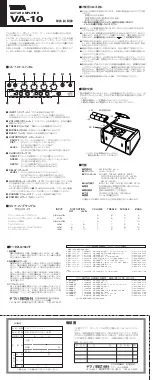
8
XP-25 Owner’s Manual
system critically for some time (10 minutes to 1 hour) using various
musical selections that you are familiar with.
Once again reduce the gain on your preamp and select the next
lowest resistive loading value (50 ohms) from the XP-25 front panel.
Once again give the electronics a couple minutes to settle in and
listen to the same musical selections as before. If your test selections
sound better with the new 50-ohm loading you can be assured
that the loading change was in the correct (lower resistance in this
example) direction.
If this second load selection resulted in an even more pleasant
presentation of your chosen musical selections, select the next lower
resistive value, 30 ohms, and listen to the same selections once again.
At some point you will find a value where the perceived sound
deteriorates, move back to the last value that sounded excellent.
Once this has been done, you have reached the apparent optimal
resistive loading.
If going below 100 ohms resulted in degraded sound, then obviously
the correct change would have been to have gone upward to 160
ohms, where you would repeat the listening test. I am sure you get
the idea, it is not complicated, but it can be time consuming.
Capacitive loading follows the same rigor and affects the finer
points of resistive loading. The final and optimal setting will require
alternating between resistive and reactive loading elements, peaking
each element in turn until no further gains are achieved.
Capacitive loading will not affect moving coil cartridges to the same
extent that capacitive loading affects moving magnet cartridges but
the effect may be worth considering and optimizing this parameter
once resistive loading is optimal.
Again I would like to stress that you are listening for a musical
balance in the selections that you play. Some loading selections will
offer better bass but suffer from poor high-end resolution, some
will have spectacular high-end definition but have a flat sound stage.
You are seeking an optimal condition with correct spectral balance
in conjunction with correct spatial information. The XP-25 equips
you with the tools for the task. Finding the best compromise will
however take time.
Do not make the mistake of setting the XP-25 such that it enhances
one recording only, listen to a variety of well-recorded material and
adjust accordingly. Avoid the folly of only auditioning and adjusting
to your favorite LP.































